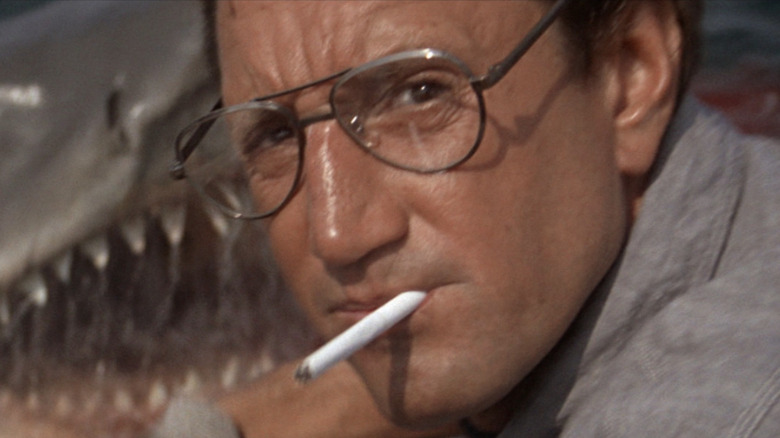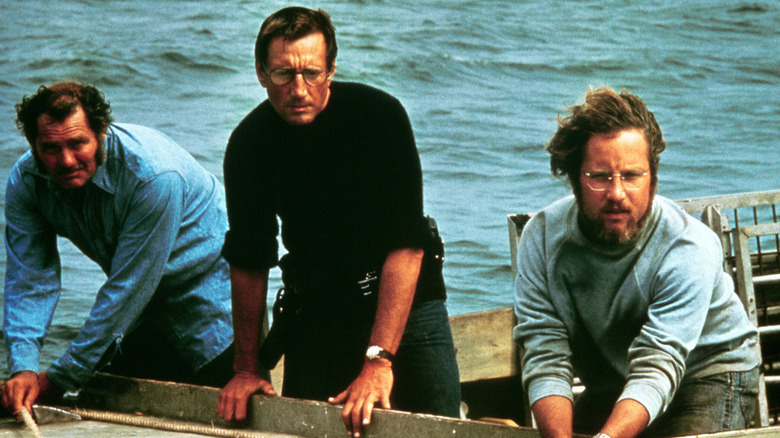Jaws Almost Had A Completely Different Ending
Since its debut in 1975, "Jaws" has become a bonafide classic. Steven Spielberg's film is even credited as the prototypical summer blockbuster, and it became the highest-grossing movie until the first "Star Wars" came out a few years later.
Based on Peter Benchley's 1974 novel of the same name, "Jaws" takes place in the waters off the summer resort town of Amity Island, where a great white shark begins attacking and killing visitors. As the body count rises throughout the summer, local police chief Brody (Roy Scheider) teams up with shark hunter Quint (Robert Shaw) and marine biologist Hooper (Richard Dreyfuss) to hunt the predator down once and for all.
Spoiler alert: The trio manages to bring down the shark by the end of "Jaws," but the movie's iconic finale wasn't always set in stone. In fact, the film almost had a completely different ending that Spielberg decided against in order to satisfy moviegoers.
Jaws originally had a Moby Dick-esque ending
In the original ending for "Jaws" (which follows the original novel much more closely), the shark dies of harpoon injuries after being stabbed multiple times by Quint and Brody. In the novel, Quint gets killed in the process and Hooper is also eaten by the shark, leaving only Brody standing at the end.
However, Spielberg ultimately decided the movie needed a more uplifting, crowd-pleasing ending. He then came up with the final sequence viewers are familiar with today, in which Brody shoves a pressurized scuba tank into the shark's mouth and shoots the tank, causing the shark to explode. Hooper survives in this iteration, and the two men paddle back to Amity Island in good spirits.
Screenrant reports that Benchley hated the movie's ending, and complained that the scenario made little logical sense. But Spielberg argued that audiences would be able to accept this suspension of reality, and judging by the film's impressive legacy, he was right.

